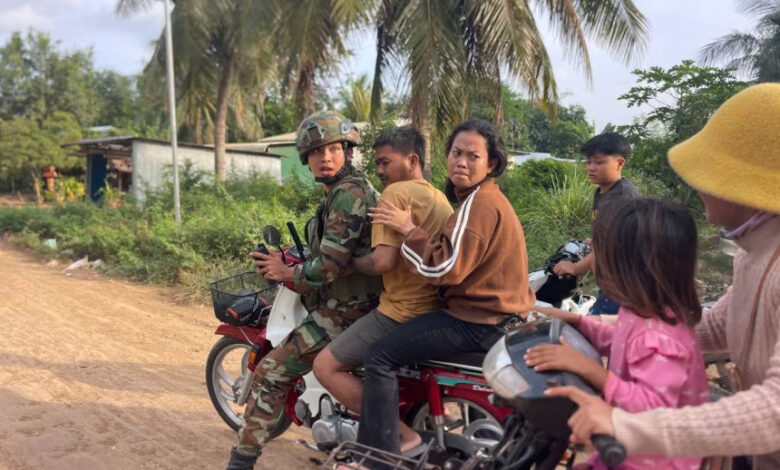
US President Donald Trump’s much-heralded peace declaration between Thailand and Cambodia is falling apart after the two countries accused each other of opening fire along their disputed border on Wednesday, in skirmishes that killed at least one person.
The brief clash came two days after Thailand said it was suspending a peace agreement reached between the two Southeast Asian kingdoms, and presided over by Trump, after several Thai soldiers were injured in a landmine explosion while on patrol in the border area Monday.
Thailand and Cambodia fought a five-day border conflict in July that killed dozens of people and displaced about 200,000 on both sides of the frontier. Trump had hailed his intervention in the dispute as further proof of his ability to end wars, and Cambodian Prime Minister Hun Manet nominated him for the Nobel Peace Prize.
An initial ceasefire between the two sides was agreed on July 28 after the US president held calls with their respective leaders. Thailand and Cambodia then signed a peace declaration in Kuala Lumpur in late October in a ceremony witnessed by Trump and Malaysian Prime Minister Anwar Ibrahim.
Cambodia’s Ministry of Defense said Wednesday that Thai soldiers opened fire on civilians in a border village in its northwestern Banteay Meanchey province, killing one person and wounding three others.

The Thai military opened fire at 3:50 p.m. and again some two hours later, ministry spokesperson Lt Gen. Maly Socheata said in a statement. Cambodia accused Thailand of carrying out “provocative actions over the past few days with the intention of inciting clashes,” in violation of the peace declaration.
The same village, which both sides claim, was the site of a confrontation in September between Thai security personnel and Cambodian villagers. Thai police deployed tear gas and rubber bullets to suppress protesters, according to the Thai Ministry of Foreign Affairs.
Contradicting the Cambodian version of events, a Thai army spokesperson said Cambodian troops had opened fire toward the Thai side in its eastern Sa Kaeo province at 4:00 p.m. on Wednesday.
“Thai troops took cover and fired warning shots toward the direction of the gunfire in accordance with the rules of engagement,” army spokesperson Maj. Gen. Winthai Suwaree said.
There were no Thai casualties or injuries and the incident lasted about 10 minutes, Winthai added.
The clash came after Thailand on Monday said it was “halting all agreements” with Cambodia and would explain its decision to Washington after a landmine explosion injured four Thai soldiers in Sisaket province, northeastern Thailand. Thailand accused Cambodia of planting fresh landmines, a claim the Cambodian government denied.
Though Wednesday’s clash was brief, it marked a significant reignition of hostilities after Bangkok and Phnom Penh’s peace declaration that included commitments from both sides to de-escalate tensions, withdraw heavy weapons from the border, and conduct de-mining efforts.
Cambodia’s Hun Manet said he “strongly condemns” the latest clash as an act against international law, and called for an independent investigation into the incident.

“I call on the Thai side to immediately cease the use of force against innocent Cambodian civilians,” Hun Manet said in a Facebook post, adding that Cambodia remains committed to the ceasefire agreement.
Thailand and Cambodia have fought over their disputed border for decades, but the fighting in July was some of the most serious in years. Each side accused the other of starting the border flare-up.
The two countries share a 500-mile (800-kilometer) land border, and the territorial dispute over demarcated portions of it largely stems from a map drawn up by the French when they controlled Cambodia as a colony, which Thailand does not accept.




